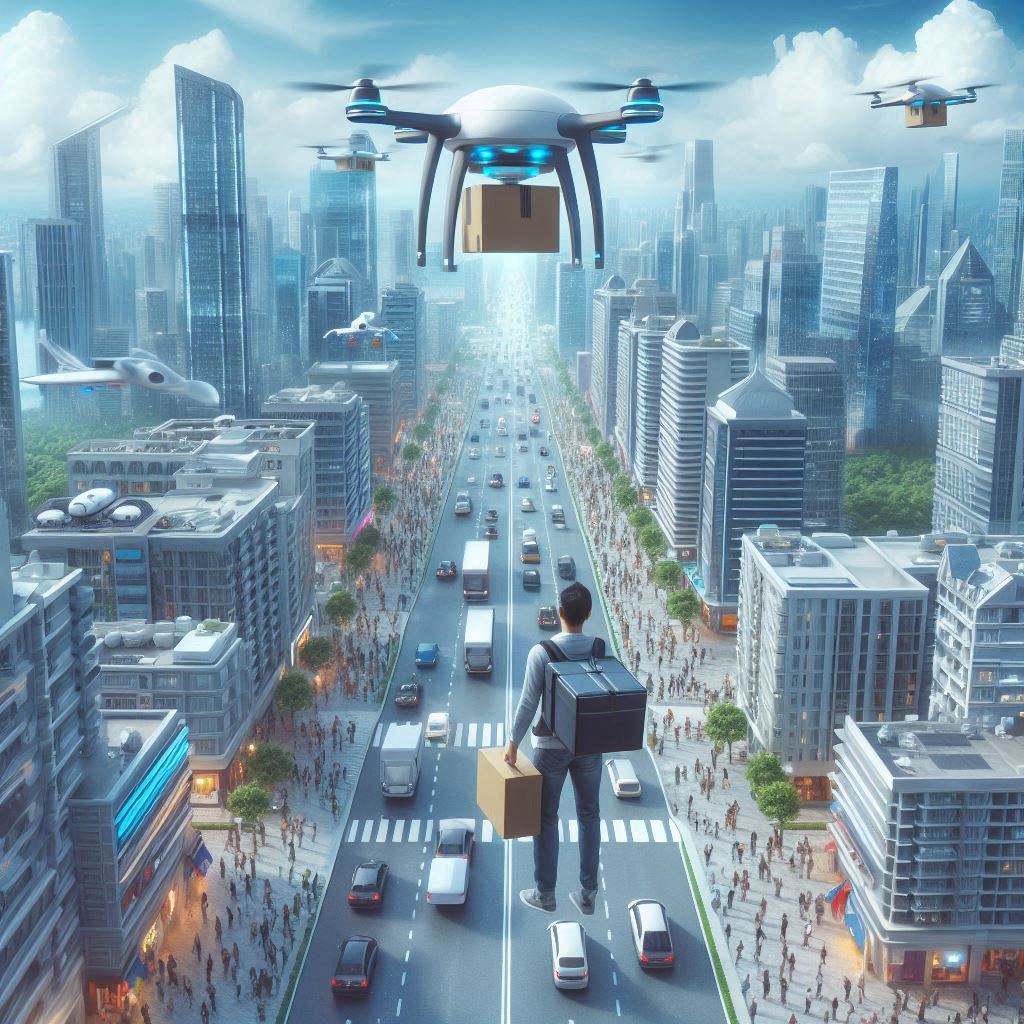Introduction to Impact of New Technology on Industry
In this era of speed and efficiency, distribution of goods is key in making business survive within competitive markets. The industry’s landscape is currently undergoing unprecedented changes due to technological developments. Innovation is transforming the way goods are moved from point A to B, from robotic warehouses to real-time tracking systems. Therefore, how can technology revolutionize the distribution of goods? Let us have a look at the most important innovations and worker benefits fueling this development!
What Is One Way That Technology Can Improve the Distribution of Goods?
The distribution of goods in today’s fast-paced world has been improved significantly by technology. One effective way through which technology can enhance this procedure is through installing advanced tracking systems for monitoring moving products from warehouse up to delivery points.
This allows companies to have full visibility over their supply chain through GPS tracking and RFID technologies thereby enabling better inventory management and streamlined logistical operations. In addition, it minimizes mistakes thus facilitating faster deliveries for customers.
Moreover, sorting, packing, and shipping goods are increasingly being revolutionized by automation tools like robotics or AI-powered algorithms. This level of automation increases operation speed but reduces human error massively.
Adopting these advancements into distribution processes will result in increased productivity, cost savings as well as more satisfied clients ultimately.
Advancements in Distribution Technology
Transportation and delivery of commodities have changed entirely following technological advancements in distribution technology. Using advanced tracking systems that enable businesses track shipments in real time all along is one major innovation in this direction. This enhances efficiency while minimizing chances for delays or errors on the supply chain.
Besides having automated warehouses with robots controlled by AI technology there are other significant developments towards this end as well. These smart systems optimize storage space, increase picking accuracy, and speed up order fulfillment processes resulting in faster order fulfillment rates with minimum human error tendencies.
What are the Benefits to Workers of Employing New Technologies in Industry

The industrial world is changing with new technology and workers are benefiting immensely. By using new technologies in industry, the safety of workers is improved through automation of risky tasks as well as reducing manual labor leading to a decrease on workplace accidents and thus creating healthier working environment for staff.
Furthermore, technological advancements make processes more effective thereby increasing efficiency and productiveness. Instead of engaging in monotonous manual work, employees can now concentrate on such higher value-adding roles where critical thinking and creativity are required. This enables them to acquire new expertise; adapt to emerging technologies hence enhancing their job satisfaction levels.
Additionally, real time data analytics offers employees tools for making informed decisions quickly. Decisions made from the lower level enable all the employees contribute effectively towards business goals which could significantly help growth therefore improving overall company performance. Besides improving organization’s performance, new technology usage boosts experience of work among personnel across various fields.
Role of Automatics and Robotics in Making Distribution Processes More Efficient
Automation and Robotics has changed how goods are distributed in modern industries. Incorporation of advanced technology into the distribution process has made it possible for companies streamline operations since it improves efficiency.
Robots powered by artificial intelligence can pick items four times as swiftly as human beings do while putting fewer mistakes hence increasing productivity. Automated systems also support warehouse optimization that maximizes storage space at reduced travel time.
These advancements increase speed while ensuring accuracy and dependability within a given distribution process. Thereby automation takes care of repetitive tasks so that employees are involved in more complex responsibilities requiring critical thinking and problem solving skills.
Integration between Automation/Robotics into Distribution Processes: Changing How Goods Move from Manufacturers to Consumers Fast & Correctly
Impact on Workers and Job Market

Without doubt, integrating technology into the distribution sector has brought about significant changes in handling goods from one place to another. The emergence of technologies like robots & automation have indeed improved the efficiency of distributions operations. However, this uptake in automation also raises questions regarding its impact on jobs and workers.
The fear of potential job displacement due to automation is growing as more tasks become automated in traditional roles within distribution centers. While there are new positions for skilled technicians operating or maintaining these technologies that may emerge, some skill requirements could change too.
Additionally, by adopting technological innovations to streamline operations, companies have to ensure that their employees adapt and improve their skills to remain useful in the era of increasing automation. Through improving personal employability, such adaptation enhances resilience among the workforce towards technology-related business disruptions.
Strategies for Companies to Adapt and Get Ready for Changes Brought About by Technology
Technology continues to move forward at a very fast rate therefore organizations must adjust themselves and be ready for what it brings to the distribution industry. One main strategy is providing training programs that educate workers on new technologies. This makes them competent enough thus ensuring they can operate effectively with automation and robotics in distribution processes.
Encouraging a culture of innovation within the organization is another important approach. This means that employees should be encouraged to adopt technological changes and provided with opportunities to suggest ways in which operations could be made more efficient.
Additionally, it is recommended that organizations continuously monitor industry trends and invest in research and development to stay ahead of their competitors. Businesses can take this information to proactively implement solutions that strengthen their distribution systems with emerging technologies.
Working together with technology gurus or consultants can also offer valuable insights on how to best assimilate new technologies into existing workflows. Companies gain specific knowledge needed for optimization of their distribution processes through hiring external professionals thus making them more effective.
Conclusion: The Future of Efficiency Lies in Innovation
Companies have to adopt innovations to remain competitive and respond quickly to changes in the market in order to succeed in the distribution sector. They may deploy new technologies such as automation, robotization, artificial intelligence (AI), and data analysis to enhance their operations while at the same time improve their efficiency levels, bring down costs and boost customer satisfaction.
This is why companies must take proactive measures to adapt and prepare for these rapid technological advances that affect the global distribution of goods. Enterprises on the other hand can smoothly transition into a more efficient future by investing in training programs that enable employees acquire new skills required for a technology driven environment and creating continuous learning and innovation culture within organizations.
Businesses can therefore optimize their operations as well as create a more sustainable supply chain that benefits both workers and consumers by embracing innovation and effectively utilizing technology across all aspects of distribution processes such as inventory management; from inception till last mile delivery. In this fast-paced digital era, those who embrace change will thrive while those resistant risk falling behind.






